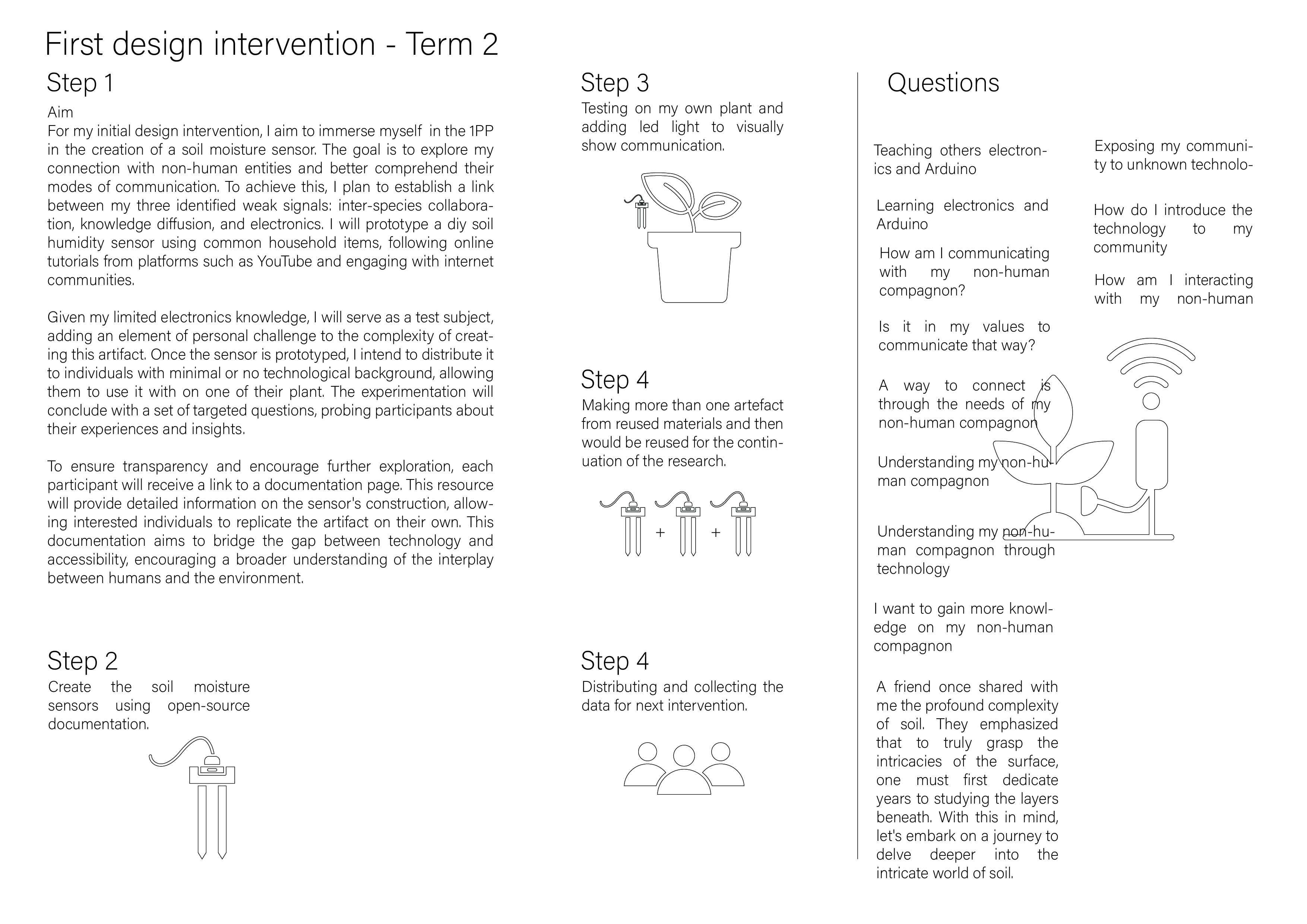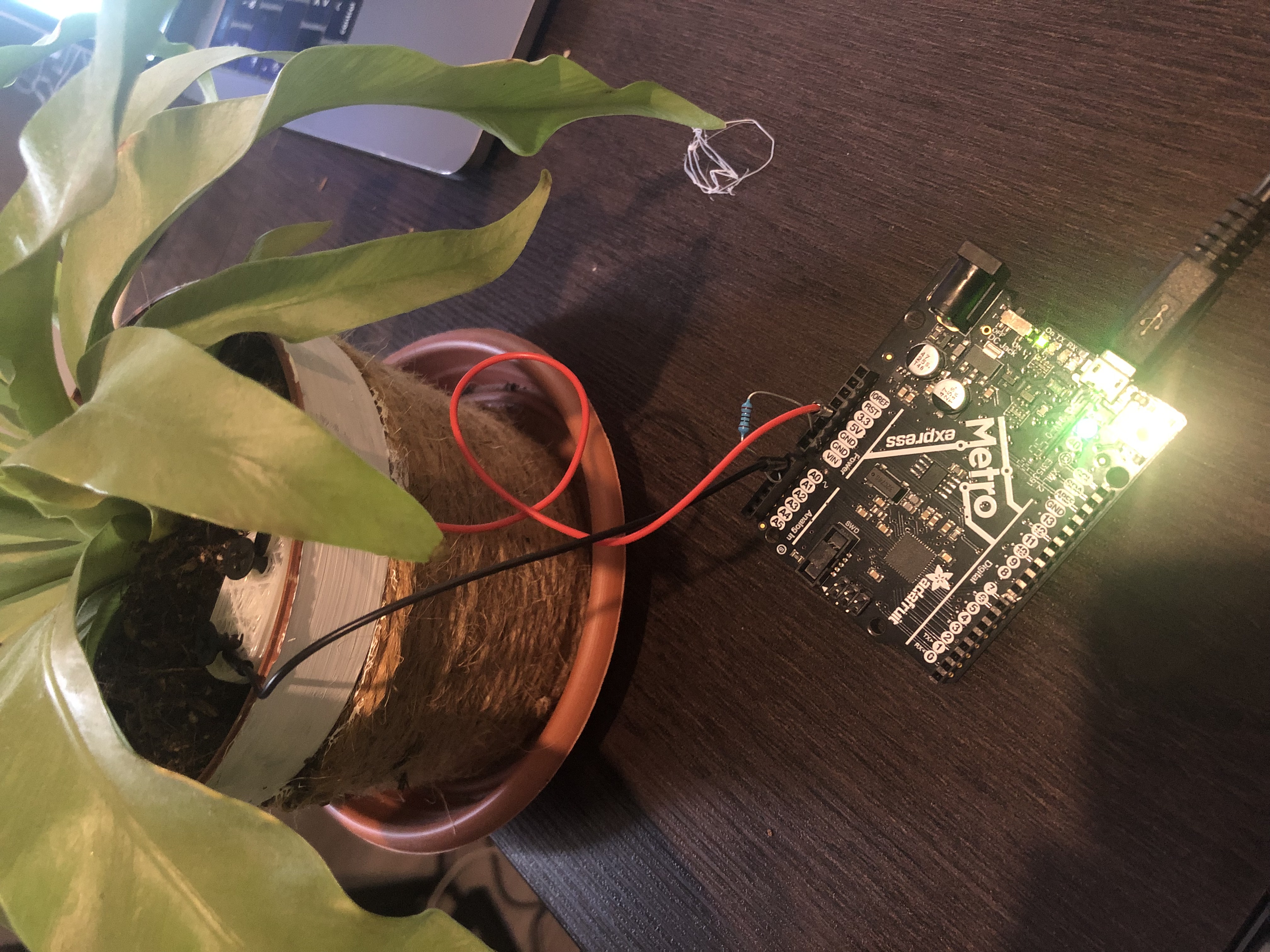
Investigating the topics of electronics, non-human actors in cities, and knowledge diffusion within a safe environment for women.
The initial question of this intervention emerged from the concept of establishing connections and understanding non-human beings in our cities through the learning of electronics. In the 1PP, I aimed to determine if I could prototype a soil humidity sensor using materials found around my house, with my small knowledge of electronics. After more or less making it work (thanks to my specialist, who corrected me on some points), I was eager to explore how I could connect people and living organisms in our households.
For my first intervention, the initial idea was to create an artifact that I could lend to women I know, those not in contact with technology, and ask them to respond to a set of questions. Testing it on a friend, I wasn't convinced that the person was truly engaged with the artifact; it lacked a personal touch. This led me to question whether the dynamic would be different if the person interacting with the artifact had been involved in building it.

Code humidity sensor
**************** code made by PARTH SANTOSH KUNNIR************/
/****************** code is subjected to copy right**************/
int moistPin = 0;
int moistVal = 0;
void setup()
{
Serial.begin(9600);
}
void loop()
{
moistVal = analogRead(moistPin);
Serial.println(moistVal);
int percent = 2.718282 * 2.718282 * (.008985 * moistVal + 0.207762); //calculate percent for probes about 1 - 1.5 inches apart
Serial.print(percent);
Serial.println("% Moisture ");
if(percent<50)
{digitalWrite(13,HIGH);}// if the sensor value is below 50% led on your nano will glow else it is off
else
{digitalWrite(13,LOW);}
delay(250); // for stability
}
Code humidity sensor LED
int moistPin = 0;
int ledPin = 12; // Pin for the LED
int moistVal = 0;
void setup()
{
Serial.begin(9600);
pinMode(ledPin, OUTPUT); // Set the LED pin as an output
}
void loop()
{
moistVal = analogRead(moistPin);
Serial.println(moistVal);
int percent = 2.718282 * 2.718282 * (.008985 * moistVal + 0.207762); //calculate percent for probes about 1 - 1.5 inches apart
Serial.print(percent);
Serial.println("% Moisture ");
if (percent < 55) {
digitalWrite(ledPin, HIGH); // Turn on the LED if moisture is below 55%
} else {
digitalWrite(ledPin, LOW); // Turn off the LED if moisture is 55% or above
}
delay(250); // for stability
}


Therefore, I invited two friends who didn't have much contact with electronics and plants in general, along with another friend who served as a specialist during the prototyping of the artifact. As I am very new to the world of electronics, it was imperative to have a professional presence to guide us through the session. I prepared several documents for documentation to follow and provided the components. After that, we started building. <3
The fascinating aspect of these types of prototyping sessions is that we all learn from each other. Even though I know I haven't magically made my friends fall in love with electronics, we all had many things to reflect on—whether it was the soil, how such a low-tech artifact could provide quite specific information, or how electricity is conducted through the soil.
What's next?
I don't know how yet, but I'd like to try prototyping another soil sensor using biomaterials or a living material rather than using traditional components. I'd like to continue intervening in communities of women which don't have much knowledge of the biodiversity surrounding them and continue trying to connect them through electronics. I'd like to exchange with professionals that study alternative futures for our cities in Barcelona.
AI Website Software